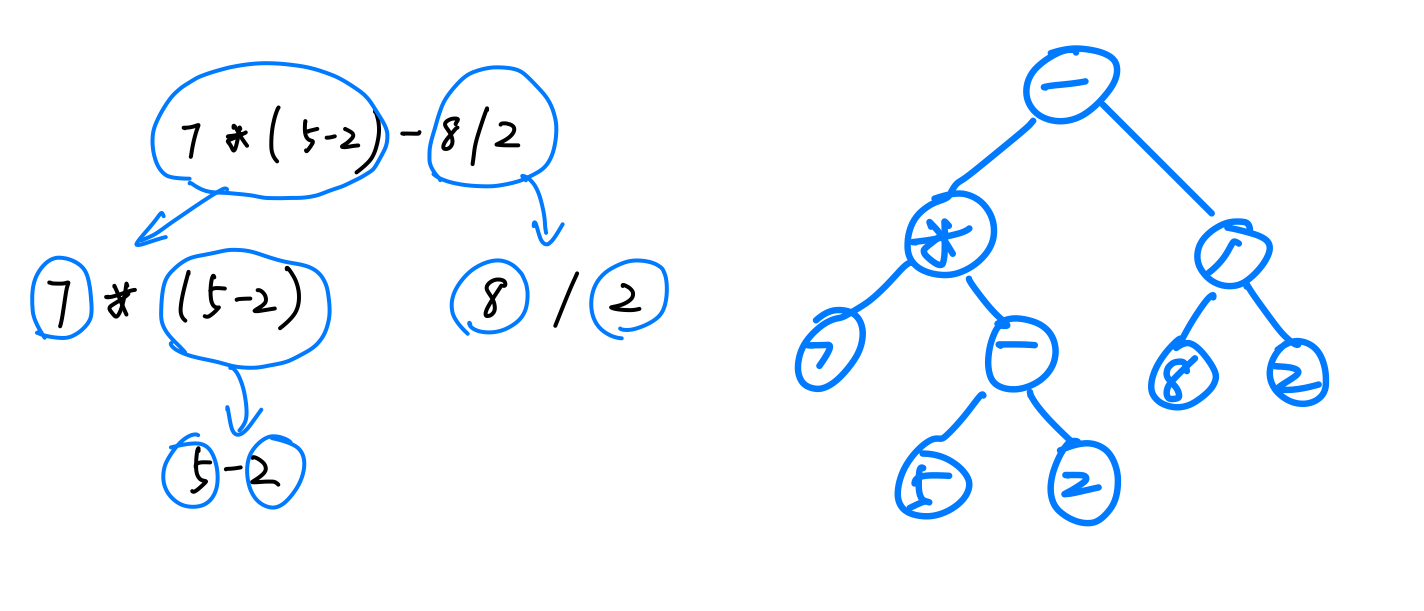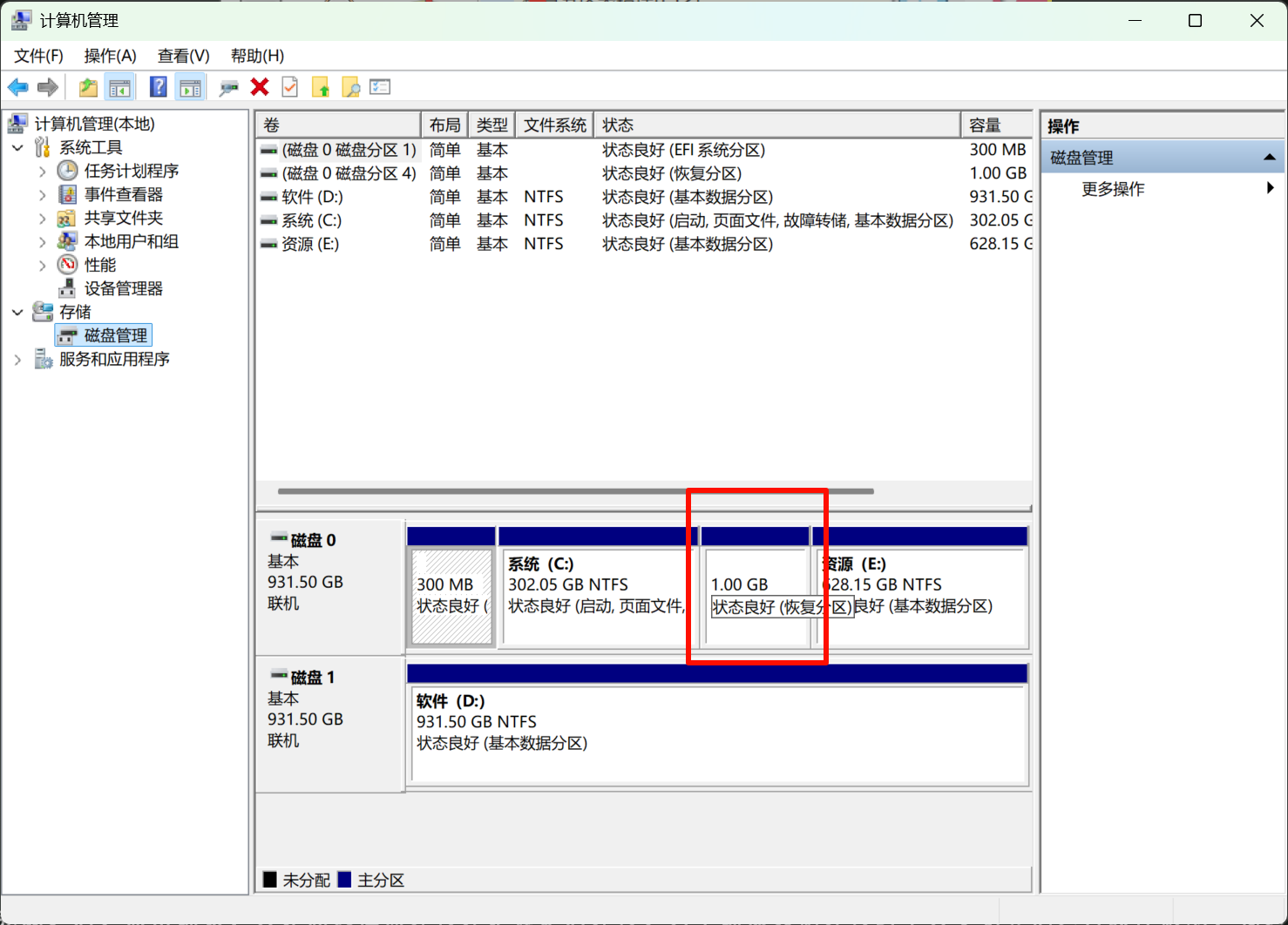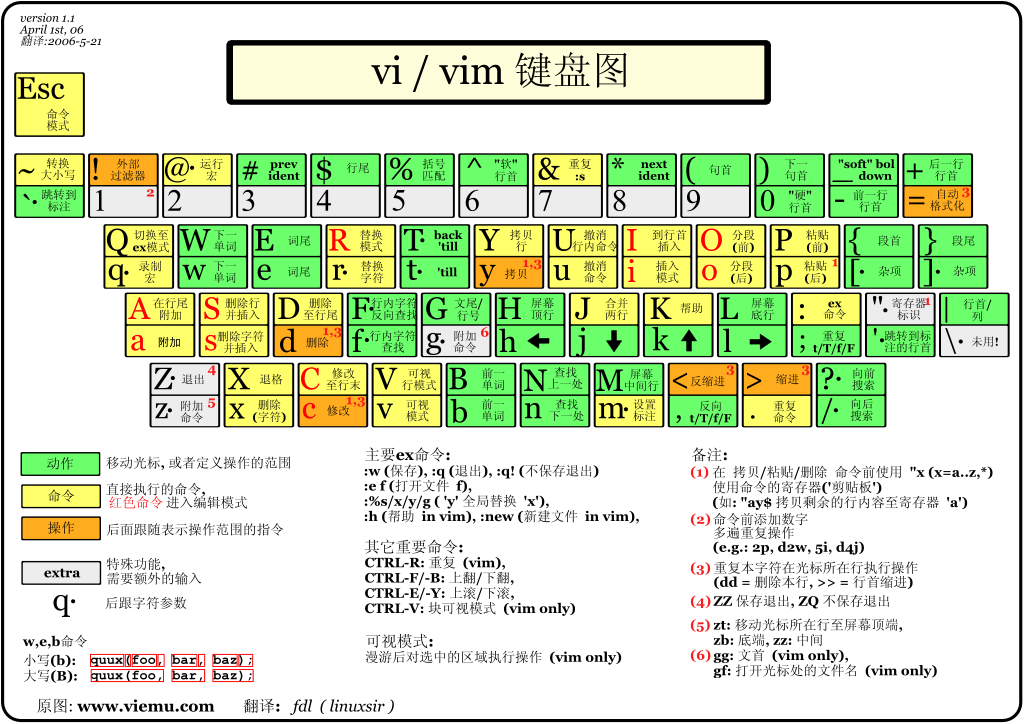数据结构_二叉树(C++实现 1前言:此类笔记仅用于个人复习,内容主要在于记录和体现个人理解,详细还请结合bite课件、录播、板书和代码。
[toc]
前言 本篇中的是一般二叉树(包括线索树、表达式树)是通过链式结构 实现的 ,关于顺序结构的实现请见C语言版(顺便有堆的相关内容)本篇中哈夫曼树的结点存储是用的是顺序结构 模版不支持分离编译,因此跟以往自定义变量和函数时,声明在头文件、实现在源文件不同,定义(声明+实现)都是在头文件中【详见code日记】 二叉树 采用链式存储
二叉树类的声明: 1 2 3 4 5 6 7 8 9 10 11 12 13 14 15 16 17 18 19 20 21 22 23 24 25 26 27 28 29 30 31 32 33 34 35 36 37 38 39 40 41 42 43 44 45 46 47 48 49 50 51 52 53 54 55 56 57 58 59 60 61 62 63 64 65 66 67 68 69 70 71 72 73 74 75 76 77 78 79 80 81 82 83 84 85 86 87 88 89 90 91 92 93 94 95 96 97 98 99 100 101 102 103 104 105 106 107 108 109 110 111 112 113 114 #pragma once #include <iostream> #include <queue> #include <stack> #include <vector> #include <sstream> using namespace std;class nullPoint { }; template <class elemType >class binaryTree ;template <class elemType >class Node { friend class binaryTree <elemType>; private : elemType data; Node<elemType> *left; Node<elemType> *right; int leftFlag; int rightFlag; public : Node () { left = NULL ; right = NULL ; leftFlag = 0 ; rightFlag = 0 ; } Node (const elemType& data, Node<elemType> *left = NULL , Node<elemType> *right = NULL ) { this ->data = data; this ->left = left; this ->right = right; leftFlag = 0 ; rightFlag = 0 ; } }; template <class elemType >class binaryTree { private : Node<elemType> *root; elemType stopFlag; public : binaryTree () { root = NULL ; } void creatTree (const elemType& flag) bool isEmpty () { return root == NULL ; } Node<elemType> *getRoot () { return root; } int Size (Node<elemType> *t) int Size () int Height (Node<elemType> *t) int Height () void delTree (Node<elemType> *t) void delTree () void preOrder (Node<elemType> *t) void preOrder () void inOrder (Node<elemType> *t) void inOrder () void postOrder (Node<elemType> *t) void postOrder () void levelOrder () Node<elemType> *threadMin () ; void threadMidInOrder (Node<elemType> *first) void threadMidPreOrder () Node<elemType> *buildTree (elemType pre[], int pl, int pr, elemType mid[], int ml, int mr) vector<string> init (const string& s) ; int judge (const string& s) int stringToInt (string s) void buildExpressionTree (const string& s) int calculateExpressionTree () };
二叉树类的成员变量介绍 二叉树结点类
1 2 3 4 5 6 7 8 9 10 11 12 13 14 15 16 17 18 19 20 21 22 23 24 25 26 27 28 29 30 31 32 33 34 template <class elemType >class binaryTree ;template <class elemType >class Node { friend class binaryTree <elemType>; private : elemType data; Node<elemType> *left; Node<elemType> *right; int leftFlag; int rightFlag; public : Node () { left = NULL ; right = NULL ; leftFlag = 0 ; rightFlag = 0 ; } Node (const elemType& data, Node<elemType> *left = NULL , Node<elemType> *right = NULL ) { this ->data = data; this ->left = left; this ->right = right; leftFlag = 0 ; rightFlag = 0 ; } };
data为结点的数据域
left和right是指针域
leftFlag/rightFlag用于标识 孩子指针是否为线索,0则说明孩子指针保存的是指向该结点的孩子的地址,1则说明孩子指针保存的是该结点的直接前驱/后继的地址
详见二叉线索树
二叉树类的成员变量
1 2 3 4 5 6 7 8 template <class elemType >class binaryTree { private : Node<elemType> *root; elemType stopFlag;
stopFlag:在创建二叉树的时候,需要不断获取二叉树的结点,这个变量是用来 终止获取结点 的结束标志
二叉树类的实现: 二叉树的构建 1 2 3 4 5 6 7 8 9 10 11 12 13 14 15 16 17 18 19 20 21 22 23 24 25 26 27 28 29 30 31 32 33 34 35 36 37 38 39 40 41 42 43 44 45 46 47 48 49 50 template <class elemType >void binaryTree<elemType>::creatTree (const elemType& flag){ queue<Node<elemType> *> que; elemType e, el, er; Node<elemType> *p, *pl, *pr; stopFlag = flag; cout << "Please input the root:" ; cin >> e; if (e == flag) { root = NULL ; return ; } p = new Node <elemType>(e); root = p; que.push (p); while (!que.empty ()) { p = que.front (); que.pop (); cout << "Please input the left_child and the right_child of " << p->data << " using " << stopFlag << " as no child" ; cin >> el >> er; if (el != stopFlag) { pl = new Node <elemType>(el); p->left = pl; que.push (pl); } if (er != stopFlag) { pr = new Node <elemType>(er); p->right = pr; que.push (pr); } } }
借助队列构建二叉树
首先创建树的根结点入队列
只要队列不为空,循环
每次获取队首元素p并出队
若p有孩子,则创建p的左/右孩子结点,让p的指针域指向它们,并将左右孩子入队列。
否则不执行操作,进入下一次循环
队空,结束
递归求以二叉树的结点的个数 1 2 3 4 5 6 7 8 9 10 11 template <class elemType >int binaryTree<elemType>::Size (Node<elemType> *t){ return t == NULL ? 0 : 1 + Size (t->left) + Size (t->right); } template <class elemType >int binaryTree<elemType>::Size (){ return Size (root); }
可以结合图思考
递归求二叉树的高度/深度 1 2 3 4 5 6 7 8 9 10 11 12 13 14 template <class elemType >int binaryTree<elemType>::Height (Node<elemType> *t){ if (!t) return 0 ; return Height (t->left) > Height (t->right) ? Height (t->left) + 1 : Height (t->right) + 1 ; } template <class elemType >int binaryTree<elemType>::Height (){ return Height (root); }
节点的层次:从根开始定义,根为第一层,根的子结点所在的为第二层,以此类推
如下图,A的层次是1,C的是2,H的是4
树的高度/深度:根中结点的最大层次,下图中树的高度就是4
思路:递归
结点为空则返回高度为0,否则返回当前结点为根结点的树的高度:
左右子树比较高度,更高的高度+1,就是当前结点为根结点的树的高度
递归删除二叉树 1 2 3 4 5 6 7 8 9 10 11 12 13 14 15 16 17 18 template <class elemType >void binaryTree<elemType>::delTree (Node<elemType> *t){ if (!t) return ; delTree (t->left); delTree (t->right); delete t; template <class elemType >void binaryTree<elemType>::delTree (){ delTree (root); root = NULL ; }
二叉树的遍历: 二叉树的递归遍历: 前序遍历(递归) 1 2 3 4 5 6 7 8 9 10 11 12 13 14 15 16 17 18 19 template <class elemType >void binaryTree<elemType>::preOrder (Node<elemType> *t){ if (!t) { return ; } cout << t->data << " " ; preOrder (t->left); preOrder (t->right); }
中序遍历(递归) 1 2 3 4 5 6 7 8 9 10 11 12 13 14 15 16 17 18 19 template <class elemType >void binaryTree<elemType>::inOrder (Node<elemType> *t){ if (!t) { return ; } inOrder (t->left); cout << t->data << " " ; inOrder (t->right); }
后序遍历(递归) 1 2 3 4 5 6 7 8 9 10 11 12 13 14 15 16 17 18 19 template <class elemType >void binaryTree<elemType>::postOrder (Node<elemType> *t){ if (!t) { return ; } postOrder (t->left); postOrder (t->right); cout << t->data << " " ; }
二叉树的非递归遍历: 二叉树的非递归遍历,需要用 栈 来进行辅助
前序遍历(非递归) 1 2 3 4 5 6 7 8 9 10 11 12 13 14 15 16 17 18 19 20 21 22 23 24 template <class elemType >void binaryTree<elemType>::preOrder (){ if (!root) throw nullPoint (); Node<elemType> *p; stack<Node<elemType> *> s; s.push (root); while (!s.empty ()) { p = s.top (); s.pop (); cout << p->data << " " ; if (p->right) s.push (p->right); if (p->left) s.push (p->left); } cout << endl; }
前序遍历的访问是“根、左、右”
用一个栈s存储 需要遍历的结点 ,先将root入栈
只要栈不为空,就循环
获取栈顶元素p并出栈
访问p结点,输出p的data
看p有无左/右孩子,有则入栈
注意应让右孩子先入栈,再让左孩子入栈
因为栈的特性,后进先出,前序遍历要求访问完根结点之后先访问它的左孩子
所以应先让右孩子入栈,再让左孩子入栈,这样才能保证栈顶元素是左孩子
还是因为栈的特性,访问结点的时候让它的孩子入栈,这样就保证了访问完结点之后访问的就是它的孩子
中序遍历(非递归) 1 2 3 4 5 6 7 8 9 10 11 12 13 14 15 16 17 18 19 20 21 22 23 24 25 26 27 28 29 30 31 32 33 34 35 36 37 38 39 40 41 42 43 44 45 46 47 48 49 template <class elemType >void binaryTree<elemType>::inOrder (){ if (!root) throw nullPoint (); Node<elemType> *p; stack<Node<elemType> *> s1; int flag; stack<int > s2; s1.push (root); s2.push (0 ); while (!s1.empty ()) { p = s1.top (); flag = s2.top (); if (flag == 1 ) { cout << p->data << " " ; s1.pop (); s2.pop (); if (p->right) { s1.push (p->right); s2.push (0 ); } } else { s2.pop (); s2.push (1 ); if (p->left) { s1.push (p->left); s2.push (0 ); } } } cout << endl; }
中序遍历的访问顺序是“左、根、右”
在访问结点的时候,需要考虑该结点是否访问过左孩子,若没有访问左孩子,则应先访问左孩子,之后再访问当前结点data,然后再访问右孩子
用flag记录结点的访问情况,未访问过左孩子则值为0,访问过则值为1,根据flag来判断对当前结点如何操作
后序遍历(非递归) 1 2 3 4 5 6 7 8 9 10 11 12 13 14 15 16 17 18 19 20 21 22 23 24 25 26 27 28 29 30 31 32 33 34 35 36 37 38 39 40 41 42 43 44 45 46 47 48 49 50 51 52 53 54 55 template <class elemType >void binaryTree<elemType>::postOrder (){ if (!root) throw nullPoint (); Node<elemType> *p; stack<Node<elemType> *> s1; int flag; stack<int > s2; s1.push (root); s2.push (0 ); while (!s1.empty ()) { p = s1.top (); flag = s2.top (); if (flag == 2 ) { cout << p->data << " " ; s1.pop (); s2.pop (); } else if (flag == 1 ) { s2.pop (); s2.push (2 ); if (p->right) { s1.push (p->right); s2.push (0 ); } } else if (flag == 0 ) { s2.pop (); s2.push (1 ); if (p->left) { s1.push (p->left); s2.push (0 ); } } } cout << endl; }
思路跟中序遍历类似,访问结点的时候按照“左、右、根”的顺序
访问结点的时候要判断是否访问过左孩子,没有访问过左孩子要先访问左孩子,如果访问过左孩子要判断是否访问过右孩子,访问过右孩子才能访问当前结点,输出当前结点的值
flag为 0 说明 未访问过当前结点的左孩子;1则说明访问过左孩子但是没访问右孩子;2则说明访问过右孩子,可以输出当前结点的data
层序遍历 1 2 3 4 5 6 7 8 9 10 11 12 13 14 15 16 17 18 19 20 21 22 23 24 25 template <class elemType >void binaryTree<elemType>::levelOrder (){ queue<Node<elemType> *> que; Node<elemType> *p; if (!root) throw nullPoint (); que.push (root); while (!que.empty ()) { p = que.front (); que.pop (); cout << p->data << " " ; if (p->left) que.push (p->left); if (p->right) que.push (p->right); } cout << endl; }
二叉线索树: 对于n个结点的二叉树,在二叉链存储结构总中有n+1个空链域
有些结点没有左/右孩子,指针域保存的地址是空的,这个指针域是空链域
利用这些空链域存放在 某种遍历次序下的结果中 该结点的 直接前驱结点 和 直接后继结点 的指针,这些指针称为线索,加上线索的二叉树称为线索二叉树。
直接前驱、直接后继:通过某种遍历方式,获得二叉树的遍历结果,在遍历结果中,某个结点的前一个结点就是 在当前遍历方式下 自己的直接前驱,后一个结点就是 在当前遍历方式下 自己的直接后继
如果指针域的指针存的是直接前驱/后继的地址,则就能找到当前结点的直接前驱或者直接后继,这就为遍历提供了线索,故称这种指针为线索
根据线索性质的不同,二叉树可分为前序遍历线索二叉树、中序遍历线索二叉树和后序遍历线索二叉树三种。
中序遍历线索二叉树的构建 1 2 3 4 5 6 7 8 9 10 11 12 13 14 15 16 17 18 19 20 21 22 23 24 25 26 27 28 29 30 31 32 33 34 35 36 37 38 39 40 41 42 43 44 45 46 47 48 49 50 51 52 53 54 55 56 57 58 59 60 61 62 63 64 65 66 67 68 69 70 71 72 73 74 75 76 77 78 79 80 81 82 83 84 85 86 87 88 89 template <class elemType >Node<elemType> *binaryTree<elemType>::threadMin () { if (!root) throw nullPoint (); Node<elemType> *first = NULL ; Node<elemType> *pre = NULL ; Node<elemType> *p; stack<Node<elemType> *> s1; int flag; stack<int > s2; s1.push (root); s2.push (0 ); while (!s1.empty ()) { p = s1.top (); flag = s2.top (); if (flag == 1 ) { cout << p->data << "-----" << endl; s1.pop (); s2.pop (); if (!first) first = p; if (p->right && p->rightFlag == 0 ) { s1.push (p->right); s2.push (0 ); } if (!p->left) { p->leftFlag = 1 ; p->left = pre; cout << p->data << "'s pre: " ; if (p->left) cout << p->left->data << endl; else cout << "NULL" << endl; } if (!p->right) { p->rightFlag = 1 ; p->right = !s1.empty () ? s1.top () : NULL ; cout << p->data << "'s next: " ; if (p->right) cout << p->right->data << endl; else cout << "NULL" << endl; } pre = p; } else { s2.pop (); s2.push (1 ); if (p->leftFlag == 0 && p->left) { s1.push (p->left); s2.push (0 ); } } } return first; }
在进行中序遍历的时候顺便对当前访问的结点添加上线索
访问的上一个结点是当前结点的直接前驱,即将访问的下一个结点(栈顶元素)是当前结点的直接后继
借助中序遍历线索树实现 中序非递归遍历 1 2 3 4 5 6 7 8 9 10 11 12 13 14 15 16 17 18 19 20 21 22 23 24 25 26 template <class elemType >void binaryTree<elemType>::threadMidInOrder (Node<elemType> *first){ if (!first || !root) throw nullPoint (); Node<elemType> *p = first; while (p) { cout << p->data << " " ; if (p->rightFlag == 0 ) { p = p->right; while (p->leftFlag == 0 && p->left) p = p->left; } else p = p->right; } cout << endl; }
从first开始遍历
遍历结点时
有右孩子去往右孩子,访问右孩子时,右孩子有左子树,则去往左子树的最左结点
无右孩子则去往直接后继
借助中序遍历线索树实现 前序非递归遍历 1 2 3 4 5 6 7 8 9 10 11 12 13 14 15 16 17 18 19 20 21 22 23 24 25 26 template <class elemType >void binaryTree<elemType>::threadMidPreOrder (){ if (!root) throw nullPoint (); Node<elemType> *p = root; while (p) { cout << p->data << " " ; if (p->leftFlag == 0 ) p = p->left; else { while (p->rightFlag == 1 && p->right) { p = p->right; } p = p->right; } } cout << endl; }
从root开始遍历
有左孩子访问左孩子
没有左孩子访问右孩子,没有右孩子则去往直接后继,直到有右孩子,访问右孩子
已知前中序遍历结果,求二叉树 1 2 3 4 5 6 7 8 9 10 11 12 13 14 15 16 17 18 19 20 21 22 23 24 25 26 27 28 29 30 31 32 33 34 35 36 37 38 39 40 41 42 43 44 45 46 47 template <class elemType >Node<elemType> *binaryTree<elemType>::buildTree (elemType pre[], int pl, int pr, elemType mid[], int ml, int mr) { Node<elemType> *p; Node<elemType> *leftRoot, *rightRoot; int i, pos, num; int lpl, lpr, lml, lmr; int rpl, rpr, rml, rmr; if (pl > pr) return NULL ; p = new Node <elemType>(pre[pl]); if (!root) root = p; for (i = ml; i <= mr; i++) { if (mid[i] == pre[pl]) break ; } pos = i; num = pos - ml; lpl = pl + 1 ; lpr = pl + num; lml = ml; lmr = pos - 1 ; leftRoot = buildTree (pre, lpl, lpr, mid, lml, lmr); rpl = lpl + 1 ; rpr = pr; rml = pos + 1 ; rmr = mr; rightRoot = buildTree (pre, rpl, rpr, mid, rml, rmr); p->left = leftRoot; p->right = rightRoot; return p; }
根据前序遍历“根、左、右”和中序遍历“左、根、右”
前序遍历结果中的第一个结点就是根,在中序遍历中找到这个根,中序遍历结果中这个根的左面的所有结点就是这个根的左子树的遍历结果,右面的所有结点就是右子树的遍历结果
这样可以用前序遍历结果找根,中序遍历结果找子树的遍历结果,构建完整二叉树
树是递归的结构,树可以分为根和子树,子树又分为根和子树
所以要递归找根结点,直到不能再分
例如:已知一棵树的前序遍历和中序遍历结果
前序序列:B、L、S、C、F、D、G、I、H
中序序列:L、S、B、F、C、I、G、H、D
理论思路过程:
算法实现:
pre、mid:前序遍历、中序遍历的结果结果数组
pl、pr、ml、mr:前序、中序遍历结果数组的左右边界
p:创建当前树的根结点
leftRoot、rightRoot:创建当前树的左子树、右子树的根结点
(根在前序遍历中的位置不用记录,前序遍历结果的第一个就是)
num:记录左子树结点的个数
lpl、 lpr、 lml、 lmr:记录前序遍历、中序遍历中左子树的范围
rpl,、rpr,、rml、rmr:记录前序遍历、中序遍历中右子树的范围
表达式树的构建: 1 2 3 4 5 6 7 8 9 10 11 12 13 14 15 16 17 18 19 20 21 22 23 24 25 26 27 28 template <class elemType >vector<string> binaryTree<elemType>::init (const string& s) { vector<string> v; int i = 0 , j; while (i < s.length ()) { j = i; while (j < s.length () && s[j] <= '9' && s[j] >= '0' ) { j++; } if (i == j) v.push_back (s.substr (i++, 1 )); else { v.push_back (s.substr (i, j - i)); i = j; } } return v; }
1 2 3 4 5 6 7 8 9 10 11 12 13 14 template <class elemType >int binaryTree<elemType>::judge (const string& s){ if (s == "+" || s == "-" ) return 1 ; else if (s == "*" || s == "/" ) return 2 ; else if (s == "(" ) return 3 ; else if (s == ")" ) return -1 ; else return 0 ; }
1 2 3 4 5 6 7 8 9 10 11 template <class elemType >int binaryTree<elemType>::stringToInt (string s){ stringstream ss; int i; ss << s; ss >> i; return i; }
1 2 3 4 5 6 7 8 9 10 11 12 13 14 15 16 17 18 19 20 21 22 23 24 25 26 27 28 29 30 31 32 33 34 35 36 37 38 39 40 41 42 43 44 45 46 47 48 49 50 51 52 53 54 55 56 57 58 59 60 61 62 63 64 65 66 67 68 69 70 71 72 73 74 75 76 77 78 79 80 81 82 83 84 85 86 87 88 89 90 91 92 93 94 95 96 97 98 template <class elemType >void binaryTree<elemType>::buildExpressionTree (const string& s){ if (root) { cout << "This binaryTree is not a null tree , please define another binaryTree to make it as a ExpressionTree" << endl; return ; } stack<string> s1; stack<Node<string> *> s2; Node<string> *p, *left, *right; vector<string> v = init (s); for (int i = 0 ; i < v.size (); i++) { if (judge (v[i]) == 0 ) { p = new Node <string>(v[i]); s2.push (p); } else if (judge (v[i]) == 3 ) s1.push (v[i]); else if (judge (v[i]) == 1 || judge (v[i]) == 2 ) { if (s1.size () == 0 ) s1.push (v[i]); else { while (!s1.empty () && s1.top () != "(" && judge (v[i]) < judge (s1.top ())) { right = s2.top (); s2.pop (); left = s2.top (); s2.pop (); p = new Node <string>(s1.top ()); s1.pop (); p->left = left; p->right = right; s2.push (p); } s1.push (v[i]); } } else if (judge (v[i]) == -1 ) { while (judge (s1.top ()) != 3 ) { right = s2.top (); s2.pop (); left = s2.top (); s2.pop (); p = new Node <string>(s1.top ()); s1.pop (); p->left = left; p->right = right; s2.push (p); } s1.pop (); } } while (!s1.empty ()) { right = s2.top (); s2.pop (); left = s2.top (); s2.pop (); p = new Node <string>(s1.top ()); s1.pop (); p->left = left; p->right = right; s2.push (p); } root = s2.top (); }
总体思路:
表达式其实是一种递归,表达式是由 左操作数 操作符 右操作数 组成
而 操作数 是 表达式的值
所以表达式 是由 左表达式的值 操作符 右表达式的值 组成
在计算表达式的时候,要先知道 左操作数 和 右操作数 才能进行计算,也就是要先计算左表达式和右表达式
在计算表达式的时候,优先度越高的表达式越先计算,其结果作为优先度低一级的部分的操作数
因此表达式,是由优先度比自己高的表达式(的结果)组成的
所以表达式本质就是二叉树,左子树是左表达式,根结点是操作符,右子树是右表达式
树的叶子结点是表达式里的操作数
构建表达式树,就是优先度越高的部分组成的子树层次越深,越靠近叶子
从左到右顺序读取表达式的元素,将表达式的操作数都建成结点,这个是表达式树的叶子结点
优先级最高的表达式最先构建成树,并且成为优先级低于自己的表达式的子树
s1为操作符栈,用来比较操作符的优先度和存储操作符
s2为子树栈,存放已经建成的表达式子树
遍历表达式vector
如果是操作数,直接进s2栈
如果是操作符
如果s1栈为空,直接进s1
如果s1栈不为空
如果当前操作符为 左括号,直接进栈
如果当前操作符是 加减乘除,就与栈顶比较,如果栈顶不为空且不为 左括号,比栈顶优先级低,就让栈顶出栈,
每次出栈,出栈的栈顶元素要与子树栈的两个栈顶元素构建成子树,并压入子树栈
如果当前操作符为 右括号,在遇到左括号之前,一直将操作符栈顶弹栈(操作符弹栈,按照👆的规矩),直到遇到左括号,将左括号出栈
每次出栈,出栈的栈顶元素要与子树栈的两个栈顶元素构建成子树,并压入子树栈
遍历完表达式之后,处理子树栈,将各个子树组成一个表达式树
将操作符栈栈顶出栈直到栈空,每次出栈,出栈的栈顶元素要与子树栈的两个栈顶元素构建成子树,并压入子树栈
子树栈中只会剩下一个根结点,这个根结点就是表达式树的根结点
表达式树的计算: 1 2 3 4 5 6 7 8 9 10 11 12 13 14 15 16 17 18 19 20 21 22 23 24 25 26 27 28 29 30 31 32 33 34 35 36 37 38 39 40 41 42 43 44 45 46 47 48 49 50 51 52 53 54 55 56 57 58 59 60 61 62 63 64 65 66 67 68 69 70 71 72 73 74 75 76 template <class elemType >int binaryTree<elemType>::calculateExpressionTree (){ if (!root) throw nullPoint (); stack<Node<elemType> *> s1; stack<int > s2; Node<elemType> *p; int flag; stack<int > num; s1.push (root); s2.push (0 ); while (!s1.empty ()) { flag = s2.top (); s2.pop (); p = s1.top (); if (flag == 2 ) { s1.pop (); if (p->data == "+" || p->data == "-" || p->data == "*" || p->data == "/" ) { int n2 = num.top (); num.pop (); int n1 = num.top (); num.pop (); if (p->data == "+" ) num.push (n1 + n2); else if (p->data == "-" ) num.push (n1 - n2); else if (p->data == "/" ) num.push (n1 / n2); else if (p->data == "*" ) num.push (n1 * n2); } else { num.push (stringToInt (p->data)); } } else if (flag == 1 ) { s2.push (2 ); if (p->right) { s1.push (p->right); s2.push (0 ); } } else if (flag == 0 ) { s2.push (1 ); if (p->left) { s1.push (p->left); s2.push (0 ); } } } return num.top (); }
计算的时候就采用后序遍历
访问当前结点之前先访问左右孩子,因此树中最先访问的是叶子结点也就是操作数,凡是操作数都入栈保存下来,在访问到操作符的时候就用栈中的操作数进行计算,计算结果作为操作数入栈
哈夫曼树/最优二叉树 路径:一个结点到另一个结点之间的通路就是路径。比如B到H就是一条路径,B到G也是一条路径
路径的长度:路径上经过的边(“树枝”)的数目。从根结点到第i层结点的路径的长度就是 i-1
结点的权:给一个结点赋予一个权值。比如给E一个权值20
结点的带权路径长度:根结点到一个带权结点的路径长度乘这个结点的权值。H的带权路径长度是2*19=38
树的带权路径长度(WPL):所有叶子结点的带权路径长度之和。这棵树的WPL是2 * 44 + 3 * 19 + 2 * 46 + 2 * 11 = 259
哈夫曼树/最优二叉树:当有n的带权结点,都作为叶子结点构建成一棵二叉树时,如果构建成的二叉树的WPL最小,就称为“最优二叉树”,也称“哈夫曼树”
哈夫曼编码:在一棵哈夫曼树中,从根结点开始向下走,经过左孩子记为0,经过右孩子记为1,直到某个叶子结点,从根到这个叶子结点得到的0、1序列就是这个叶子结点的哈夫曼编码。比如,假设上面的树是哈夫曼树,H的哈夫曼编码求法:从A开始到H,A->B:0, B->E:1, E->H:1,叶子结点E的哈夫曼编码就是011.
哈夫曼树类的声明: 采用顺序存储
1 2 3 4 5 6 7 8 9 10 11 12 13 14 15 16 17 18 19 20 21 22 23 24 25 26 27 28 29 30 31 32 33 34 35 36 37 38 39 40 41 42 43 44 45 46 47 48 #include <iostream> #include <vector> #include <stack> using namespace std;template <class elemType >class HFNode { public : elemType data; double weight; int parents, left, right; HFNode () { weight = 0 ; parents = 0 ; left = 0 ; right = 0 ; } }; template <class elemType >class huffmanTree { private : HFNode<elemType> *HFTree; int leafSize; vector<string> HFCode; public : huffmanTree () { HFTree = NULL ; leafSize = 0 ; } vector<HFNode<elemType>> getNode (); void buildBestBinaryTree (vector<HFNode<elemType>> allNode) HFNode<elemType> *getRoot () { return HFTree; } void makeHuffmanCode () };
哈夫曼树类的成员变量介绍 哈夫曼树结点类
1 2 3 4 5 6 7 8 9 10 11 12 13 14 15 16 template <class elemType >class HFNode { public : elemType data; double weight; int parents, left, right; HFNode () { weight = 0 ; parents = 0 ; left = 0 ; right = 0 ; } };
相比普通二叉树的结点,由于用顺序表存储,孩子结点指针域换成了位置下标,并加了父结点位置下标
增加了结点的权值weight
哈夫曼树类的成员变量
1 2 3 4 5 6 7 template <class elemType >class huffmanTree { private : HFNode<elemType> *HFTree; int leafSize; vector<string> HFCode;
哈夫曼树类的实现: 哈夫曼树的构建 要想构建二叉树首先得有叶子结点,要先获取叶子结点集合
1 2 3 4 5 6 7 8 9 10 11 12 13 14 15 16 17 18 19 20 21 22 23 24 25 26 27 28 29 30 31 32 template <class elemType >vector<HFNode<elemType>> huffmanTree<elemType>::getNode () { vector<HFNode<elemType>> allNode; cout << "Input the data and weight of the HFNode to add it " << endl; cout << "Before you input , input Y to continue ,or others to exit " << endl; char x; cin >> x; while (x == 'Y' ) { elemType data; double weight; cout << "input the data of the HFNode" << endl; cin >> data; cout << "input the weight of the HFNode" << endl; cin >> weight; HFNode<elemType> n; n.weight = weight; n.data = data; allNode.push_back (n); cout << "Input the data and weight of the HFNode to add it " << endl; cout << "Before you input , input Y to continue ,or others to exit " << endl; cin >> x; } leafSize = allNode.size (); return allNode; }
用叶子结点集合构建哈夫曼树
1 2 3 4 5 6 7 8 9 10 11 12 13 14 15 16 17 18 19 20 21 22 23 24 25 26 27 28 29 30 31 32 33 34 35 36 37 38 39 40 41 42 43 44 45 46 47 48 49 50 51 52 53 54 55 56 57 58 59 60 61 62 63 64 65 66 67 68 69 70 71 template <class elemType >void huffmanTree<elemType>::buildBestBinaryTree (vector<HFNode<elemType>> allNode){ HFTree = new HFNode<elemType>[2 * allNode.size ()]; for (int i = 0 ; i < allNode.size (); i++) { HFTree[i + 1 ] = allNode[i]; HFTree[i + 1 ].parents = 0 ; HFTree[i + 1 ].left = 0 ; HFTree[i + 1 ].right = 0 ; } int i = allNode.size (); int n = allNode.size (); while (i != 1 ) { int first_min, second_min; double first_min_weight = 9999 ; double second_min_weight = 9999 ; for (int x = 1 ; x <= n; x++) { if (HFTree[x].parents == 0 && HFTree[x].weight < first_min_weight) { first_min = x; first_min_weight = HFTree[x].weight; } } for (int x = 1 ; x <= n; x++) { if (x != first_min && HFTree[x].parents == 0 && HFTree[x].weight < second_min_weight) { second_min = x; second_min_weight = HFTree[x].weight; } } double weight_added = first_min_weight + second_min_weight; n++; HFTree[first_min].parents = n; HFTree[second_min].parents = n; HFTree[n].left = first_min; HFTree[n].right = second_min; HFTree[n].weight = weight_added; i--; } for (int x = 1 ; x <= n; x++) { cout << "---------" << endl; cout << "index: " << x << endl; cout << "data: " << HFTree[x].data << endl; cout << "weight: " << HFTree[x].weight << endl; cout << "parents: " << HFTree[x].parents << endl; cout << "left: " << HFTree[x].left << endl; cout << "right: " << HFTree[x].right << endl; cout << "---------" << endl; } }
哈夫曼算法:
每次找哈夫曼顺序表里权重最小的两个结点,创建一个新结点,新结点是权重是两个最小结点的和,最小结点是新结点的左孩子,次小结点是新结点的右孩子,新结点存入哈夫曼顺序表。这样构建出来的树就是哈夫曼树。
创建一个哈夫曼树顺序表用来存储哈夫曼树。
之前获得的叶子结点集合作为哈夫曼树的叶子结点。根据二叉树的性质,如果叶子结点的数目是n,则度为2的结点数目是n-1,而通过哈夫曼算法建立的哈夫曼树,所有的分支结点的度都是2,故哈夫曼树的结点总数是2n-1。
我们创建一个大小为2n的哈夫曼树顺序表,空出第一个位置,如果表中的结点无父亲或孩子,那么就让对应的下标为0
先将所有叶子结点添加到哈夫曼树表
刚开始所有的叶子结点都没有父亲、孩子,故父亲、孩子下标都为0
一开始所有结点都没有父结点,当哈夫曼树建立完成之后,只有根结点是没有父亲的,由此来判定哈夫曼树是否建成
由于每次循环创建一个新结点,原来权重最小的两个结点有了父结点,没有父结点的结点总数-2,但是新结点是没有父结点的,所以每次循环总体上为无父结点的结点总数-1
创建哈夫曼编码 1 2 3 4 5 6 7 8 9 10 11 12 13 14 15 16 17 18 19 20 21 22 23 24 25 26 27 28 29 30 31 32 33 34 35 36 template <class elemType >void huffmanTree<elemType>::makeHuffmanCode (){ stack<char > s; HFCode.push_back (" " ); for (int i = 1 ; i <= leafSize; i++) { int j = i; while (HFTree[j].parents != 0 ) { if (HFTree[HFTree[j].parents].left == j) s.push ('0' ); else s.push ('1' ); j = HFTree[j].parents; } while (!s.empty ()) { HFCode[i].push_back (s.top ()); s.pop (); } } for (int i = 1 ; i <= leafSize; i++) { cout << "data is: " << HFTree[i].data << " " ; cout << "code is: " << HFCode[i] << endl; } }
对于每一个叶子结点进行哈夫曼编码的时候,用字符栈保存自己的哈夫曼编码
不断向上寻找当前结点的父亲,并且判断当前结点是其父亲的左孩子还是右孩子,左为’0’,右为’1’
所有叶子结点的哈夫曼编码保存到HFCode中
结束 That’s all, thanks for reading!💐
















